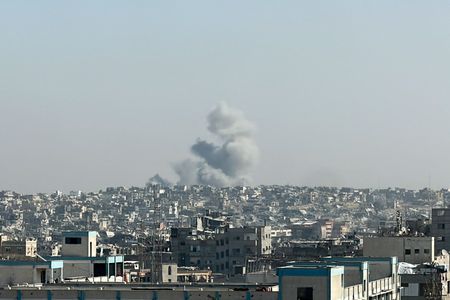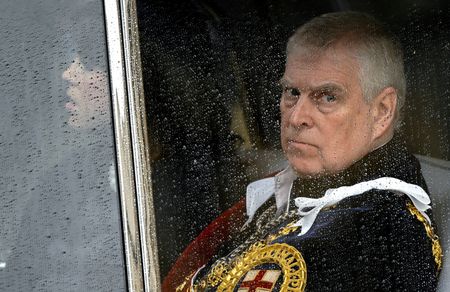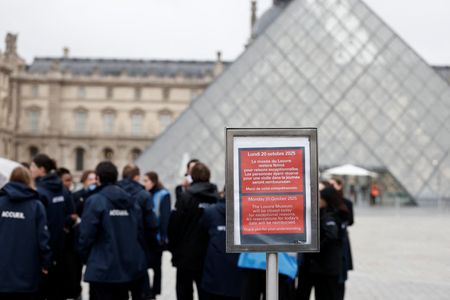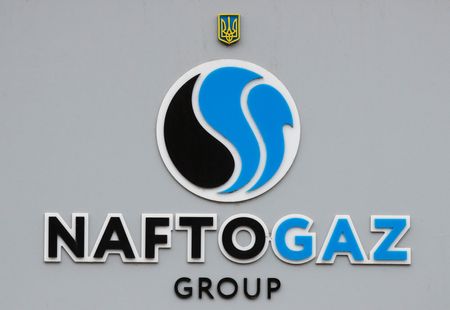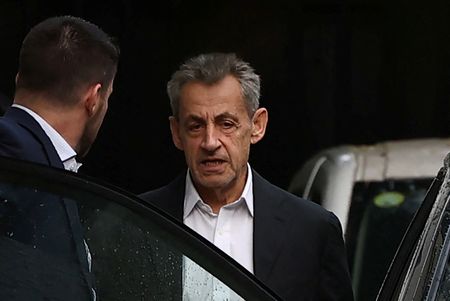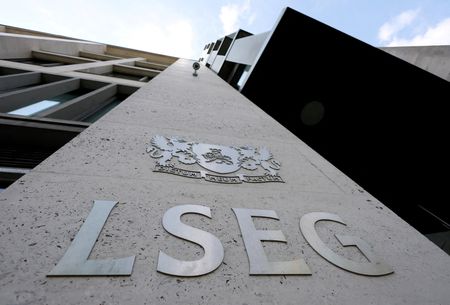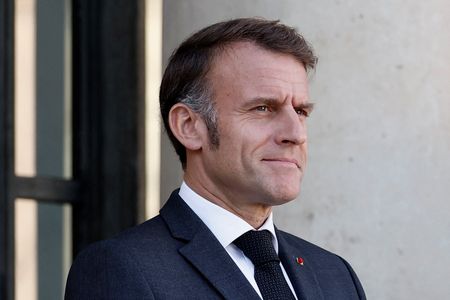By Nidal al-Mughrabi and Steven Scheer
CAIRO/JERUSALEM (Reuters) -U.S. envoys met Israeli Prime Minister Benjamin Netanyahu on Monday aiming to corral Israel and Hamas to get the Gaza ceasefire plan back on track after an explosion of violence over the weekend that threatened to derail the week-old truce.
Israel and Hamas have both recommitted to the ceasefire plan pushed by U.S. President Donald Trump since Sunday’s flare-up in which a Palestinian attack that killed two soldiers prompted an Israeli bombardment killing at least 28 people in Gaza.
However, with even the first stages of the truce shaken by repeated flashes of violence, including on Monday, it is far from clear whether the U.S. will be able to keep pressure on the two sides and maintain momentum to end the conflict.
TALKS ON NEXT PHASE OF CEASEFIRE PLAN
The U.S. envoys, Steve Witkoff and Trump’s son-in-law Jared Kushner, were expected to push to shore up the truce and then start talks on the next, more difficult, phase of the 20-step plan during their visit.
U.S. Vice President JD Vance was also due to visit Israel on Tuesday, with Netanyahu saying the pair would discuss regional challenges and opportunities.
High-level U.S. diplomacy in the region, with talks also due later on Monday with Hamas in Egypt, underscores the importance of cementing the ceasefire to Trump, who last week proclaimed “the historic dawn of a new Middle East”.
On Monday, Palestinian medics said three more people had been killed by Israeli tank fire near the “yellow line” demarcating Israel’s military pullback inside Gaza from the main populated areas. The Israeli military said forces had fired at militants who crossed that line.
Gaza City residents said they were confused about the line, with electronic maps available but physical markings not established yet on most of the route.
“The whole area is in ruins. We saw the maps, but we can’t tell where those lines are,” said Samir, 50, who lives in Tuffah.
Israel’s defence minister on Monday published video showing bulldozers towing yellow blocks into place to mark out the line.
HAMAS TO HAND OVER BODY OF ANOTHER HOSTAGE
Witkoff and Kushner’s visit to Israel, aimed at discussions on the next phase of Trump’s complex ceasefire plan, was scheduled before Sunday’s flare-up in violence, according to U.S. and Israeli sources.
Trump said the ceasefire he brokered was still in place. Hamas leadership, he said, may not be involved in the violations. “We think maybe the leadership isn’t involved in that,” he told reporters aboard Air Force One.
Israel is unlikely to publicise any progress in the talks until the remains of more hostages are returned, and it believes Hamas could hand over up to six more bodies immediately out of the 16 still in Gaza. Other bodies may be hard to recover because of destruction in the enclave.
Hamas said it would hand over the body of another hostage later on Monday.
Egypt will host talks in Cairo on Monday with Khalil Al-Hayya, Hamas’ exiled Gaza chief, over ways to follow up on implementing the ceasefire, the group said in a statement.
A Palestinian official close to the talks said the group’s delegation would discuss ways to push forward the formation of a technocratic body to run Gaza without Hamas representation.
Hamas and other allied factions reject any foreign administration of Gaza, as envisaged in the Trump plan and has so far resisted calls to lay down arms, which may complicate implementation of the deal.
RESIDENTS FEAR MORE OUTBREAKS OF VIOLENCE
Both Israel and Hamas have said they remain committed to the ceasefire after Sunday’s violence.
Israel said it launched strikes across the enclave in response to a Palestinian attack that killed two soldiers operating within the agreed deployment line in Rafah in southern Gaza.
“Israel will not accept any violations of the ceasefire in the Gaza Strip,” an Israeli government spokesman said on Monday, repeating that Hamas could have no future role inside Gaza and would be disarmed.
Hamas’ armed wing, which has refused to commit to disarmament under the plan, said it was unaware of clashes in Rafah and had not been in contact with groups there since March.
Hamas has detailed what it calls a series of violations by Israel that it says killed 46 people and stopped essential supplies from reaching the enclave.
Israeli Defence Minister Israel Katz said any Hamas militants in areas of Gaza still under Israeli control must leave immediately and anyone remaining beyond the yellow line would be targeted without warning.
Despite an earlier threat to withhold supplies from Gaza over the brief truce breakdown, an Israeli security official said aid convoys would continue to enter the enclave.
With the truce still uncertain, Gaza residents fear more violence.
“I felt my heart dropping to the ground, I felt the ceasefire collapsed,” said Abu Abdallah, a Gaza City businessman displaced in the central Gaza Strip.
“What happened yesterday made people go crazy to buy food, greedy merchants hiked the prices. The deal looks so fragile,” he told Reuters via a chat app.
(Reporting by Nidal al-Mughrabi in Cairo, Steven Scheer, Alex Cornwell and Maayan Lubell in Jerusalem; editing by Angus McDowall and Alex Richardson)

